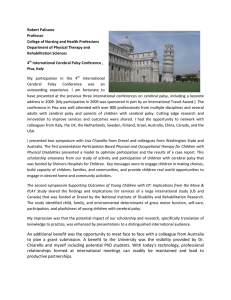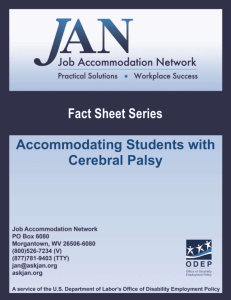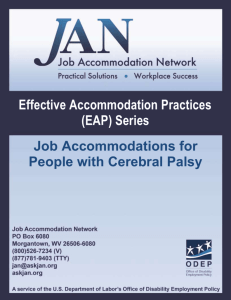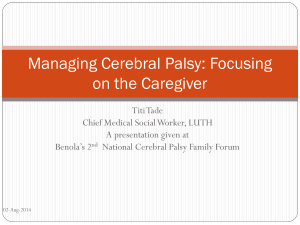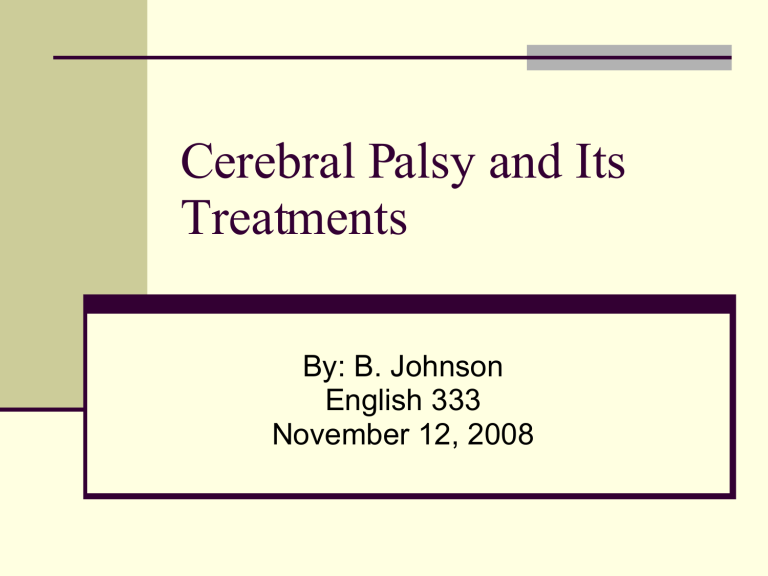
Cerebral Palsy and Its Treatments By: B. Johnson English 333 November 12, 2008 Outline What is Cerebral Palsy Types of Cerebral Palsy Causes of Cerebral Palsy Symptoms of Cerebral Palsy Non-Physical Therapy Treatments Physical Therapy Reference Questions What is Cerebral Palsy Cerebral Palsy-(CP) A condition causes, neurological damage and inhibits the child’s normal developmental Process. Cerebral" refers to brain and "palsy" refers to the lack of motor control. (Mosby,1994). Types of Cerebral Palsy Spastic- involves tense, contracted muscles. Athetoid- uncontrolled motion, in the face, arms, and trunk. Ataxic- poor balance, stumbles and falls. Mixed forms- spastic muscle tone and involuntary movements. Causes of Cerebral Palsy Developmental malformations. Neurological damage that occurs before, during or after birth. Symptoms of Cerebral Palsy Physical Symptoms Difficulty in sucking and poor muscle control. Muscle spasms and seizures. Behavioral Symptoms Poor ability to concentrate. Emotional problems and mental retardation in some. Non-Physical Therapy Treatments Speech Therapy- A symptom of many people with cerebral palsy is dsyphagia, difficulty in speaking. Occupational Therapy- Help the patients develop skills like feeding, tooth brushing and dressing. Physical Therapy Sitting Vertical head control. Control of head and trunk. Standing and walking Establish an equal distribution of weight on each foot. Train to use steps or inclines. Works Cited Page Anderson, Kenneth, et al. Mosby's Medical, Nursing and Allied Health Dictionary. Chicago: Mosby, 1994. Gersh, Elliot, M.D. "What is Cerebral Palsy". Children with Cerebral Palsy. 1990. Levitt, Sophie. Treatment of Cerebral Palsy and Motor Delay. 3rd ed. Cambridge: University Press, 1995. Questions???? Thank You



